Atlantic Monthly Contributors's Blog, page 90
August 29, 2016
Arson in Brussels

NEWS BRIEF Belgium’s national forensics lab was set on fire early Monday morning, causing an explosion in the wing of the building where the evidence labs are located, reported Flanders News, the English-language news website of VRT, the Flemish public broadcaster. It said no one was injured and that five people were detained near the lab, but were later released.
Belgium has been on high alert since the deadly terrorist attacks in March, and the explosion was initially feared to be the work of militants. Authorities, however, said the attack was more likely linked to organized crime.
“It was arson, deliberate arson, at the laboratory of the federal police,” prosecutor Ine Van Wymersch said, according to Reuters. “With a fire you get explosions, but it’s not that explosives were thrown inside or installed.”
She added: “We are thinking more of deliberate arson by organized crime. We have no indications that it was terrorism.”
Van Wymersch said, according to The New York Times, the “damage to the building is severe.” The newspaper added the “attack on the crime lab could hinder police and intelligence officials as they pursue suspects and monitor threats.”
The breach is still under investigation, but it could prove embarrassing for Belgian security forces and intelligence agencies.
In March, 32 people were killed and hundreds more were injured when militants attacked Brussels’ airport and one of its subway stations. ISIS claimed responsibility. As we wrote in the aftermath of the attacks, the failures of the Belgian intelligence agencies, seen as weak and ineffective compared with those of Britain and the United States, were blamed for the attacks.
Belgian authorities have been quick to downplay the possibility that the fire at the crime lab was linked to terrorism, and as the Times notes, “for now, the case is being handled as an arson investigation, so it is being dealt with by the Brussels prosecutor’s office. If the case is deemed to involve terrorism, it may be transferred to the control of the federal prosecutor.”

Beyoncé, Rihanna, and Kanye's Blockbuster Night
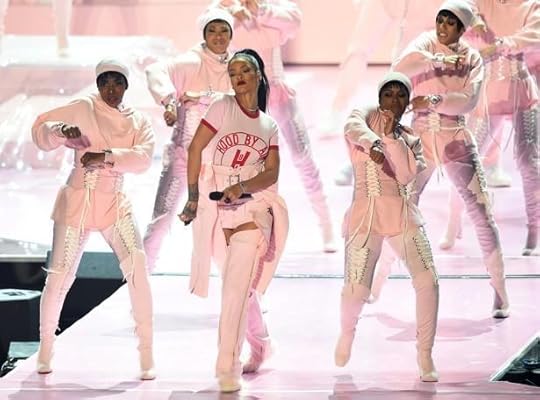
Like movies, TV, and probably politics, popular music today is driven by the blockbuster effect, where a small group of people command a vastly outsized amount of attention—and profit. Last night’s MTV Video Music Awards offered a vivid snapshot of this unequal ecosystem, with music’s top 1 percent of the 1 percent being given a blanket license to flex their power at length on national TV.
Beyoncé played five songs in their entirety, nearly half of Lemonade. Rihanna performed four separate medleys of hits throughout the night. Kanye West got four minutes of stage time to do whatever he wanted, and it turned out he wanted to speechify for a bit then premiere a music video. Everyone else was an afterthought.
The fact these artists enjoyed such freedom in the typically tightly scripted, something-for-everyone environment of an awards show is a sign of the centrality of superstar brands in pop culture these days. But it’s also a reminder of how a generation of popular musicians—notably, popular black musicians—have taken up the mantle of capital-a art in a way that other eras haven’t always encouraged. These entertainers can command such stage time in part because they’re presuming to do more than simply entertain.
The reigning master of this style of stardom is Beyoncé, a fact that she reasserted with a vengeance at Madison Square Garden. Though her presence at the show wasn’t announced until the day of the telecast, her team had secretly been putting in monumental work to pull off a 15-minute set of elaborate choreography, fresh visuals, and Beyoncé showing off her peerlessness as a performer.
During “Pray You Catch Me,” she stood in a group of white-robed women who, in succession, were hit by beams of red light and fell to the ground—a striking image that can be read in personal, feminist, or racial terms, especially given that Beyoncé had brought the mothers of black men killed by police with her to the ceremony. At the end of “Hold Up,” she took a baseball bat to an MTV camera, seeming to crack the lens. “Sorry” began with a dramatic light show, her face strobed with blue and red, and for “Don’t Hurt Yourself,” Beyoncé donned a flossy fur coat and kneeled down among actual flames. “Formation” sent the arena into standing ovation when her dancers lay in the shape of the female symbol: formation indeed. This was Lemonade’s most aggressive, electrifying material, daringly more sour than sweet—a display of total dominance.
Where Beyoncé showed her creative worth, West mostly talked about it, as he’s done for years. No one could have been surprised to see him use part of his stage time to compare himself to Steve Jobs and Walt Disney, though perhaps prognosticators were amazed that he only barely mentioned his feud with Taylor Swift. But then came the goods: a music video where the dancer/singer Teyana Taylor sweated and gyrated in a gym, showered with her fiancée (the NBA player Iman Shumpert), and then revealed herself as some cat-human hybrid, implicating oglers in light association with bestiality. Like so much of West’s work, the video was well-crafted, instantly memorable, and perverted. The associated song, “Fade,” is a low-key dance track that mostly feels like an outro on his album The Life of Pablo. It’s clear that West, at this point, has priorities other than radio hits.
Rihanna accounted for the largest share of the ceremony’s runtime, with four performances and a speech at the end of the night when she accepted MTV’s Video Vanguard Award. Rihanna herself noted how weird it was to receive a lifetime-achievement prize at age 28, but the fact that she could perform hit after hit and still leave many of her smashes untouched made a clear case for her worthiness. Though she’s sometimes been accused of seeming more like a vessel for producers than anything else, this year saw the release of Anti-, an arty, forward-thinking collection that showed a unified and singular vision at work—a vision that the VMAs then connected with her hugely fun back catalogue.
Though each contained a hodgepodge of songs from across her career, Rihanna’s four sets created stark contrasts in visual palette and sonic tone: a pink and white EDM rave to start the night, then an uproarious dancehall party, then a dramatic hip-hop-influenced stomparound, then finally a bandstand performance of a few aching ballads. Even when her voice wavered, Rihanna’s intoxicating confidence, cutting-edge fashions, and ace dancers commanded attention.
“My success is ... my country’s, it’s the Caribbean as a whole, it’s women, it’s black women.”
Next to these three pillar performers of the night, the other acts to take the stage just couldn’t compete. Britney Spears had the difficult task of following Beyoncé with a performance of her comeback single “Make Me,” giving a strangely outsized amount of stage time to the bland featured rapper G-Eazy, who also got to sneak in his hit “Me, Myself, and I.” Chainsmokers, a dance-music duo of the moment, performed their current No. 1 “Closer” with Halsey, serving to inform the nation what exactly the Chainsmokers look like. Nick Jonas took over a diner outside of Madison Square Garden in a Grease Live!-esque moment that, like all of his work, was fun but forgettable. Jimmy Fallon presented an award while doing an impersonation of Ryan Lochte, about which the less said the better for Fallon’s credibility as a comedian.
Despite the VMAs’ history of controversy, there were few breakout gossip moments other than when Drake, one of the other self-directed titans of 2016 pop, confessed to having long been “in love” with Rihanna. But even without his intro, her Video Vanguard acceptance speech would have been memorable. “My success it started as my dream, but my success is not my own,” she said in her studiedly casual style. “It’s my family’s, it’s my fans’, it’s my country’s, it’s the Caribbean as a whole, it’s women, it’s black women. So many people feel like their little piece is such a major part of this puzzle.”
It was the case for inclusion and and pop music’s social potential, a theme that subtly ran throughout the ceremony. In a night where Kanye, Beyoncé, and Rihanna dominated, it was hard to miss that the hosting cast was entirely comprised of people of color, including the comedy duo Key and Peele (way overdoing the Twitter meta-humor), Jay Pharoah, Upright Citizens Brigade’s Nicole Byer, and the snapchat-loving rap guru DJ Khaled. They, like the ceremony’s biggest performers, seemed to be enjoying a good deal of latitude from MTV, killing time with banter during lengthy set changes.
The showcase of nonwhite talent underlined who exactly is pushing pop culture forward right now. It also came amid reminders of what such a showcase might help accomplish. West’s speech touched on the murder rate in Chicago as a context that makes the visible success of people like him vital: “If you feel like you’re seeing people dying right next to you, you might feel like, what’s the point? You know like life could be like, starting to feel worthless in a way … There's three keys to keeping people impoverished: that's taking away their esteem, taking away their resources, and taking away their role models.” Last night, the role models ruled, completely unquestioned.

August 28, 2016
Is the TTIP Doomed?

NEWS BRIEF Negotiations between the U.S. and EU members over the proposed Transatlantic Trade and Investment Partnership “have de facto failed,” Germany’s economic minister said Sunday.
Sigmar Gabriel, the country’s minister for economic affairs, told German broadcaster ZDF “nobody is really admitting” the failure of TTIP discussions, but also that “nothing is moving.”
American and European diplomats have spent three years so far negotiating the agreement, which would be the world’s largest trade agreement if brought into being. The proposed treaty spans 27 chapters, covering issues ranging from anti-corruption measures and intellectual-property protections to market access and trade barriers.
Deustche Welle has more:
Gabriel, who also heads the Social Democrats (SPD), noted that after 14 rounds of talks, the two sides have yet to agree on even one chapter out of the 27 being discussed.
One of the reasons given for the breakdown in negotiations was that "we Europeans did not want to subject ourselves to American demands," Gabriel said.
The TTIP and its Asia-Pacific counterpart, the Trans-Pacific Partnership, are major policy priorities for President Obama’s administration as it enters its final months. Diplomats from the U.S. and eleven other Pacific Rim countries finalized the latter treaty’s language in October.
But both trade agreements have come under heavy criticism from the American left and right. Republican presidential candidate Donald Trump frequently criticized “bad” trade deals as harmful to working-class Americans in favor of domestic elites and foreign countries. During a speech in June, Trump even claimed the TPP was “pushed by special interests who want to rape our country.”
Hillary Clinton, his Democratic rival, initially supported the TPP during her tenure as secretary of state, placing her at odds with large swaths of the Democratic base and Vermont Senator Bernie Sanders, her opponent during the primaries. She later began to back away from the deal in the weeks before the TPP’s text was finalized, then declared her opposition to it shortly after its release last fall.
Hopes for the TPP’s passage during a lame-duck session of Congress after the November elections also look increasingly grim. Senate Majority Leader Mitch McConnell said last week the agreement “won’t be acted upon this year,” effectively punting its final fate to the next president.

August 27, 2016
Italy Earthquake: The Latest
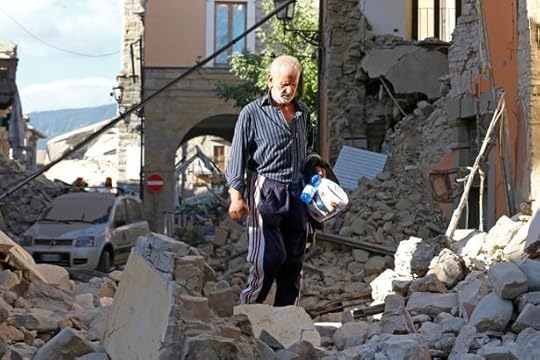
What we know Friday afternoon:
—A 4.7-magnitude aftershock struck central Italy, and the president has declared a state of emergency.
—The death toll from the magnitude-6 earthquake in central Italy has risen to 290.
—The worst-affected areas are the villages of Arquata and Pescara del Tronto in the Marche region, and Accumoli and Amatrice, which are in Lazio.
—Amatrice Mayor Sergio Pirozzi warned the city could be isolated if key access roads damaged during the aftershock were not quickly cleared.
—We’re live-blogging the major updates. All updates are in Eastern Daylight Time (GMT -4).
August 27 at 3:46 p.m.
Italy's Civile Protezione says the death toll has risen to 290 as of Saturday afternoon. The day was set aside as a national day of mourning. Grieving families in Ascoli Pisceno began to bury the dead in a state funeral on Saturday, while President Sergio Mattarella and Premier Matteo Renzi toured the region.
August 26 at 5:46 p.m.
The death toll rose to 281 as of Friday afternoon. In Amatrice, where a magnitude-4.7 aftershock hit early Friday morning, two key access bridges were damaged, threatening to isolate the city at a time when emergency responders are needed most.
“With the aftershocks yesterday but especially this morning the situation has worsened considerably," Sergio Pirozzi, the mayor of Amatrice, said Friday. "We have to make sure Amatrice does not become isolated, or risk further help being unable to get through."
August 26 at 9:45 a.m.
Aftershocks continued to hit central Italy on Friday morning as rescuers searched through the flattened houses and rubble looking for survivors. Matteo Renzi, the prime minister, declared a state of emergency.
In one of the most devastated towns, Amatrice, a magnitude-4.7 aftershock hit just after dawn and damaged two access roads, nearly isolating the hilltop town. It was the largest of more than 50 overnight aftershocks in the Appenine Mountain region, and more than 500 temblors have shook the area since the magnitude-6.2 quake hit Wednesday. As of Friday morning, 267 people have died.
Renzi’s state-of-emergency announcement authorized about $56 million in relief, much of it going to Amatrice, where the majority of people have died. Firefighters have pulled more than 215 people from the rubble, and 360 are being treated at hospitals.
August 25 at 7:16 a.m.
The death toll in Wednesday’s earthquake in central Italy has risen to 247; 190 people died in Rieti province and 57 in Ascoli Piceno. Rescue workers, thousands of them, are going through the rubble in the villages of Arquata, Pescara del Tronto, Accumoli, and Amatrice in the hope of finding survivors. Dozens are still believed to be trapped. Many of the dead were children, Italy’s health minister said, and scores of people are still missing so the toll could rise.
Amid dozens of tremors and an aftershock, rescue workers looked for survivors through the night.
5:59 p.m.
Italy's Civil Protection Department says at least 159 people have now died in the earthquake, the AP reports.
4:24 p.m.
President Obama spoke with his Italian counterpart, Sergio Mattarella, to offer his condolences and assistance on Wednesday, the White House said in a statement.
The President spoke by phone today with President Sergio Mattarella of Italy to offer his deepest condolences on behalf of the American people to the people of Italy following the devastating earthquake that struck central Italy overnight. President Obama saluted the quick action of first responders and volunteers who have been working to save lives. Reaffirming the strong bonds of friendship between the United States and Italy, the President underscored that the United States stands ready to provide any assistance needed during this difficult time.
2:55 p.m.
In an article on Italy's notoriously lax building standards, the Guardian’s John Hooper notes the earthquake’s timing could keep its death toll lower compared to a similar temblor that struck the peninsula in 2009.
The casualty tally will nevertheless be far higher than it should be in a country of Italy’s wealth – but much lower than it might have been. The 6.2-magnitude earthquake, like the one that devastated L’Aquila, struck at night.
Had people been at work, in shops or at school, the outcome would have been much worse. Two years ago, Gian Vito Graziano, president of Italy’s National Council of Geologists, said that according to some estimates, if the L’Aquila earthquake had struck when students were in their classrooms, “the number of victims would have been thousands, not hundreds.”
1:45 p.m.
Some of the images coming out of Italy show the extent of damage. Amatrice especially seems to have been flattened.
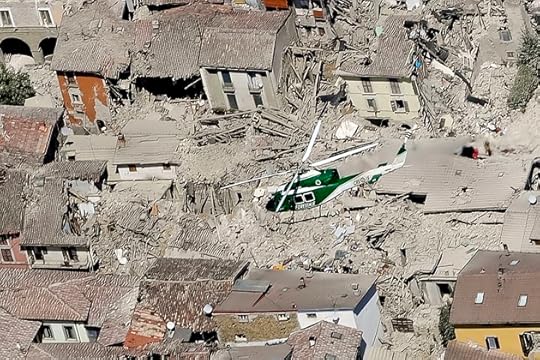
(Gregorio Borgia / AP)
1:29 p.m.
Matteo Renzi, the Italian prime minister, has raised the death toll to 120. He said more than 300 others are missing.
#Terremoto Renzi: al momento almeno 120 morti, 368 feriti. Emergenza avrà lunga gestione, garantiremo ricostruzione https://t.co/GdRnpgxfSy
— Agenzia ANSA (@Agenzia_Ansa) August 24, 2016
Rescuers are looking for survivors in the areas affected.
10:21 a.m.
ANSA has more on the breakdown of the toll:
Of the victims, 35 were counted in the Lazio village of Amatrice, 11 in the nearby village of Accumoli, and 17 confirmed in a hospital morgue in the city of Ascoli Piceno. These include fatalities from the villages of Arquata and Pescara del Tronto, plus a little girl from Amatrice who was extracted from the rubble alive but died in hospital.
10:03 a.m.
Italy’s Civil Protection Department, which is dispatched during crises like this one, says the death toll stands at 73.
+ NEWS/ Protezione Civile, #terremoto: 73 morti nuovo bilancio. +
— Rai Radio1 (@Radio1Rai) August 24, 2016
10:01 a.m.
Italian state police have released aerial footage of the affected area.
#terremoto le immagini dei paesi colpiti dal sisma dagli elicotteri della #poliziadistato pic.twitter.com/UIn5HawgO1
— Polizia di Stato (@poliziadistato) August 24, 2016
9:10 a.m.
ANSA, the Italian news agency, is reporting that the death toll has risen to 63. The number isn’t official, but is based on the news agency’s reporting from the area devastated by the quake, as well as from counts from local officials. Here’s more:
Of these, 35 were counted in the Lazio village of Amatrice, 11 in the nearby village of Accumoli, and 17 confirmed in a hospital morgue in the city of Ascoli Piceno. These include fatalities from the villages of Arquata and Pescara del Tronto, plus a little girl from Amatrice who was extracted from the rubble alive but died in hospital.
8:34 a.m.
The death toll is likely to rise. Rai, the Italian broadcaster, says the death toll in Amatrice alone is 35.
#terremoto +++ 35 vittime accertate solo ad #Amatrice +++ pic.twitter.com/QfF63xKqsw
— Rainews (@RaiNews) August 24, 2016
7:57 a.m.
We’re getting images now of the damage in Pescara del Tronto, which is located on a hillside. It looks as if much of the village has been reduced to rubble.
#Terremoto Pescara del Tronto. Il paese è raso al suolo. Macerie e soccorsi. Video @NicoleRamadori pic.twitter.com/TTFeslcZ1H
— Rai Radio1 (@Radio1Rai) August 24, 2016
Prime Minister Matteo Renzi told the nation he will visit the area Wednesday afternoon.
7:33 a.m.
The U.S. Geological Survey, which tracks quakes around the world, says the quake had a magnitude of 6.2. Here’s the region where it struck:
M6.2 #earthquake 10km SE of Norcia, Italy https://t.co/HlZXIejr4U pic.twitter.com/RFGhTvKICk
— USGS (@USGS) August 24, 2016
7:17 a.m.
Italian authorities say a magnitude-6 earthquake in the central part of the country has killed at least 38 people. Dozens more are missing in the quake that struck in the early hour of Wednesday morning.
The death toll so far is confined to four villages: Arquata and Pescara del Tronto (10 dead), which are in Marche, and Accumoli and Amatrice (28 dead), which are in Lazio.
Here’s more on the quake from ANSA, the Italian news agency:
The earthquake, which struck at 03:36 local time and was followed by a second, 5.4 magnitude seism at 04:33 between Umbria and the Marche, was said by civil protection authorities to be "comparable in intensity" to the 2009 L'Aquila earthquake in which over 300 people died.
There were reports of "apocalyptic scenes" with many collapsed buildings in the towns and villages affected. Rescuers had difficulty accessing the area due to landslides and damaged infrastructure.
This is a developing story and we’ll update it as we learn more.

Frank Ocean and Chance the Rapper: The Week in Pop-Culture Writing

How Chance the Rapper’s Life Became Perfect
Zach Baron | GQ
“Los Angeles is a weird, complicated town for him. It's where all the record labels are, for one thing. And Chancelor Bennett, as he was born, is unsigned. Won't sign. It's maybe the most interesting, improbable music-industry story going right now—a young, obviously gifted rapper, universally hailed as the heir to Kanye and leader of a new generation of Internet-savvy kids who think of Jay Z as a failed tech entrepreneur, now on his fourth year of refusing to sign with a label.”
Making a Home For Black History
Vinson Cunningham | The New Yorker
“The collection’s dependence on viscerally affecting items reflects the Smithsonian’s tendency toward a broad, largely artifact-based history—Here’s somebody’s Buick! Here’s something Walt Whitman once touched!—meant to induce gooseflesh, or thoughtful moans. Its curators know how impatient tourists and students can be.”
Donald Glover’s Community
Rembert Browne | Vulture
“Glover’s been thinking about this sense of place for a while. ‘I needed people to understand I see Atlanta as a beautiful metaphor for black people,’ he said to me when I interviewed him last year. In other words, the city—encompassing Martin Luther King Jr., Aquemini, Freaknik, Madea, Gucci Mane, a cluster of historically black colleges, the legacy of Jim Crow, the legacy of the Black Mafia Family, extreme black poverty, 40-plus years of black mayors, extreme black wealth, and perhaps America’s largest black middle class—is an ideal laboratory to explore the true variety of the black experience.”
Welcome to Planet Havana
Paul La Farge | The New Republic
“Fidel Castro’s socialist island state was a utopia, at least in aspiration: Everyone who lived there was meant to be ‘working for a more Utopian existence,’ as Wollheim had put it. Even as science-fiction writers in the United States moved on, to inner space and cyberspace and apocalypse, their Cuban counterparts continued to dream of saner lives and better worlds.”
Here in My Car
Micah Peters | The Ringer
“From the Mustang 5.0 on the cover of the external-hard-drive-dump The Lonny Breaux Collection, to the Sunkist-orange BMW E30 that graced the cover of Nostalgia, Ultra, to the begrudging respect he showed the new Bentley truck on his personal website, cars, for Ocean, are like waypoints, signposts for memories, or living, breathing dioramas that can provide complete systems for living.”
The Harambe Meme Is Still Going Strong. And It’s About a Lot More Than a Dead Gorilla.
Aja Romano | Vox
“The parts of internet culture that thrive on this multi-layered interplay coalesced around the Harambe meme. It served as an opportunity to deconstruct the histrionic level of modern media and social media commentary. It favored irreverence and cynicism. If you were a progressive, the Harambe meme gave you a chance to mock what you viewed as the hypocritical haranguing of the mainstream while avoiding real issues of social justice; and if you were a conservative, the Harambe meme gave you a chance to mock liberal hysteria.”
The Ballad of Big Freedia: How the New Orleans Bounce Icon Was Betrayed by Her City’s Housing Crisis
Alison Fensterstock | Pitchfork
“The entertainment industry is one of few that offers the opportunity to climb dramatically upward in economic class, and quickly. Unlike professional sports, probably the closest analogue, though, there’s little infrastructure in place to guide a newly-minted star through unfamiliar financial territory. The history of the music business is full of artists whose talent took them out of poverty, only to flounder in the face of things like bad contracts or newly complex tax issues.”
Playing For Time: A Father, a Dying Son, and the Quest to Make the Most Profound Videogame Ever
Jason Tanz | Wired
“Amidst all the plasma guns and power-ups, it can be easy to overlook the fact that video games are inherently metaphysical exercises. Designing one is like beta-testing a universe. Its creators encode it with algorithms, maps, and decision trees, then invite players to decipher its hidden logic. Intentionally or not, games contain implicit messages about purpose, free will, the afterlife.”
Little People, Big Woes in Hollywood: Low Pay, Degrading Jobs and a Tragic Death
Seth Abramovitch | The Hollywood Reporter
“So why did I see a minstrel show where others saw a fun night out? Particularly now, with Hollywood on high alert about its representation of marginalized groups, how is it that the hand-wringing never extends to this one—not even among little people themselves, at least not consistently? Perhaps it’s because Hollywood’s little people are at once beholden to the entertainment industry, which remains their biggest employer, and enslaved by its vision of them, which, in 2016, largely remains that of the eager-to-please freak.”
Radical Flâneuserie
Lauren Elkin | The Paris Review
“These paradoxes and contradictions encapsulate what we all face in the city. Do we want to blend in or stand out? Do we crave anonymity or fear loneliness? But women experience this in a particular way, wary of attracted unwanted attention, but also wanting to be noticed, to exist, to count, to be seen on their own terms. This is the radical move of the flâneuse: I will shop, or I won’t shop, but I am not defined by it either way.”

August 26, 2016
Paul LePage's Banner Week: Racism, Vulgar Voicemails, and an Offer to Duel
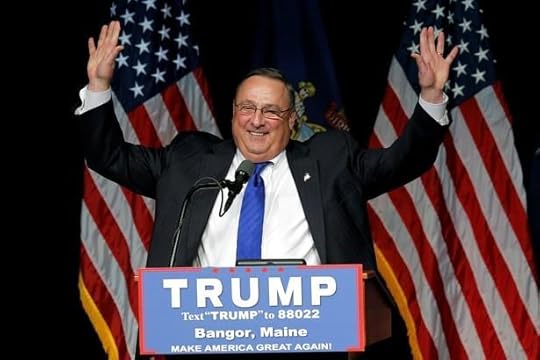
After six years in office, it takes a lot for Paul LePage to surprise. After all, the Maine governor is the guy who compared the IRS to the Gestapo, said President Obama hates white people, and appointed himself education commissioner.
Nonetheless, it’s been a banner week for the Republican.
Related Story
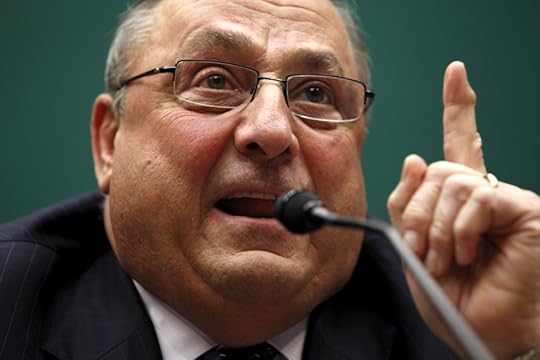
Paul LePage's Racist Fearmongering on Drugs
Back in January, LePage blamed his state’s heroin epidemic on “guys by the name D-Money, Smoothie, Shifty” who “come from Connecticut and New York. They come up here, they sell their heroin, then they go back home. Incidentally, half the time they impregnate a young, white girl before they leave.” Despite the obvious racial message, LePage insisted he had not intended to bring race into the matter, adding (somewhat contradictorily), “I tried to explain that Maine is essentially all white. I should have said ‘Maine women.’”
Now LePage has changed his tune: It really is about race.
“Let me tell you this, explain to you, I made the comment that black people are trafficking in our state, now ever since I said that comment I’ve been collecting every single drug dealer who has been arrested in our state,” LePage said Wednesday at a public forum in North Berwick. “I don’t ask them to come to Maine and sell their poison, but they come and I will tell you that 90-plus percent of those pictures in my book, and it’s a three-ringed binder, are black and Hispanic people from Waterbury, Connecticut, the Bronx and Brooklyn.”
LePage also said—again, despite a plain reading—that he was really only referring to the origin point for narcotics, not the race of the traffickers. “Nobody wants to give you the real story, but the fact of the matter is, sir, I am not a racist,” he said.
As I noted at the time of LePage’s original comments in January, the publicly available evidence did not support LePage’s idea that minorities were behind the heroin epidemic. Several recent arrests of dealers at the time had involved predominantly or exclusively white people, and a 2003 survey from the National Drug Intelligence Center suggested that most heroin entering Maine actually came from Massachusetts, via Caucasian traffickers. The epidemic has largely affected white people as well.
Naturally, reporters were interested to get their hands on LePage’s binder full of minorities. On Thursday, they asked the governor for it. He refused and stomped off. “Let me tell you something: Black people come up the highway and they kill Mainers. You ought to look into that!” he said. “You make me so sick!”
The Portland Press Herald has filed a public-records request for the binder.
One of LePage’s critics was Democratic state Representative Drew Gattine. Asked about the governor’s comments, he said, “Obviously that message is upsetting, inappropriate and uncalled for. It’s hard to believe it’s from the governor of the state of Maine, but again, we need to stay focused on the drug problem we are facing here in Maine and cannot allow this story to be about the governor’s inappropriate and vulgar behaviors.”
LePage, enraged, called Gattine up and left a voicemail in which he called the legislator a “socialist cocksucker” and “son of a bitch.” He accused Gattine of calling him a racist—Gattine says he did not—and demanded he prove the accusation. “I want you to record this and make it public because I am after you,” he said.
Gattine obliged. You can listen here:
Separately, LePage spoke wistfully about shooting Gattine in an old-school test of honor:
I wish it were 1825. And we would have a duel, that’s how angry I am, and I would not put my gun in the air, I guarantee you, I would not be [Alexander] Hamilton. I would point it right between his eyes, because he is a snot-nosed little runt and he has not done a damn thing since he’s been in the Legislature to help move the state forward.
On Friday, LePage tried to make amends, sort of. He said he was enraged at the idea that someone had called him a racist and used the worst language he could think of.
“I apologize for that to the people of Maine, but I make no apology for trying to end the drug epidemic that is ravaging our state,” he said. “Legislators like Gattine would rather be politically correct and protect ruthless drug dealers than work with me to stop this crisis that is killing five Mainers a week.”
It’s classic LePage: The governor not only apologized to Gattine, he accused him of complicity in the deaths of citizens. At this point, Mainers can expect nothing less.

174 Heroin Overdoses in Six Days in Cincinnati
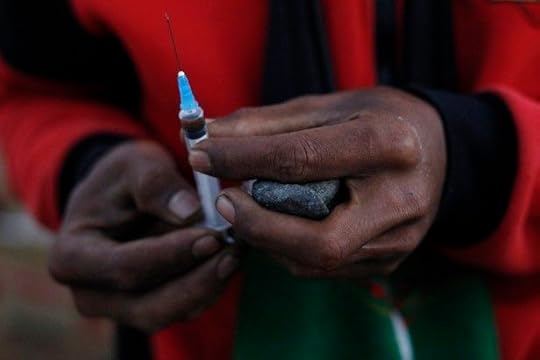
NEWS BRIEF Cincinnati is facing a public-health emergency, as an estimated 174 people overdosed on heroin in the last six days.
Police in the Ohio city are trying to find the source of the heroin batch. Tim Ingram, the Hamilton County health commissioner, told reporters Friday the number of hospital visits this week have been “unprecedented.”
Officials are pointing to a potential cause of the overdoses, as the Associated Press reports:
Cincinnati City Manager Harry Black said authorities suspect carfentanil, a drug used to sedate elephants and other large animals, may be mixed in with heroin and causing the overdoses. The drug is 100 times more potent than fentanyl, which is suspected in spates of overdoses in several states.
Last month, carfentanil was discovered in the Cincinnati area's heroin stream, but many hospitals don't have the equipment to test blood for the previously uncommon animal opioid.
Police and emergency responders are also ill-equipped to deal with the rise of heroin overdoses and the number of people who are addicted to the drug, city officials say. Three people have died this week, and authorities have yet to test samples of the drug.
The Cincinnati Enquirer reports that, on average, four people overdose in the city every day. In the last year, more than 3,000 people have died across the state from accidental drug overdoses.

The Bribery Accusations Against Brazil's Former President
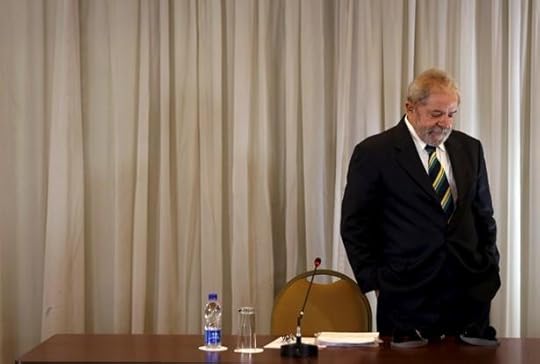
NEWS BRIEF As suspended Brazilian President Dilma Rousseff faces impeachment proceedings, her predecessor and mentor may soon face his own legal battle.
Brazilian police on Friday recommended that prosecutors bring corruption charges against former President Luiz Inacio Lula da Silva, known as Lula, and his wife, Marisa Leticia, for accepting bribes and laundering money. Prosecutors must now decide whether to ask a judge for an indictment.
The “Operation Car Wash” investigation has already landed dozens of construction executives in jail for rigging contracts and using bribery with the state-controlled oil company Petróleo Brasileiro SA. Here’s more from The Wall Street Journal on the Lula accusations:
Police allege Mr. and Mrs. da Silva illegally benefited from renovation work carried out on a luxury beach apartment by construction company OAS SA that was allegedly intended for the two. Mr. da Silva allegedly received other benefits from the builder, according to police, who calculated the total value of the renovations and other benefits at 2.4 million reais ($739,953).
Mr. da Silva and his wife have both denied that they own the apartment, saying that they paid a deposit to buy a different unit in the same building, but later decided to ask for their deposit back. Their lawyer, Cristiano Zanin Martins, said Friday there is “no evidence” that links the couple to the luxury property. Mr. Martins denied the allegations.
OAS is among 31 other construction companies named in the national collusion investigation.
Meanwhile, Rousseff, Lula’s protégée, may be dismissed from office as early as next week, having been accused of breaking budget laws. She was indicted by the Senate on August 10 and has denied any wrongdoing. Two-thirds of the Senate must vote for impeachment.

The Atlantic’s Week in Culture
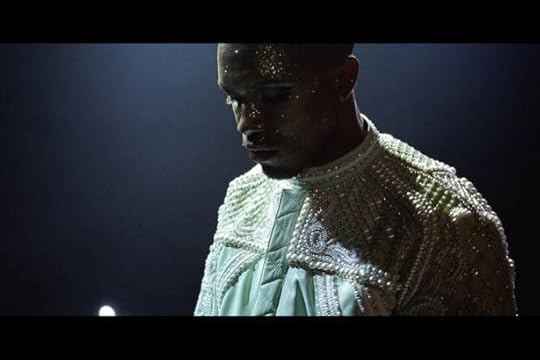
Don’t Miss
Frank Ocean’s Blond(e) Is a Monument to Memory—Spencer Kornhaber meditates on the ideas of time and timelessness that dominate the singer’s highly anticipated new album.

Paramount Pictures / MGM
Film
Ben-Hur Was Hollywood’s Epic $100M Mistake—David Sims bemoans the industry’s latest attempt at remaking Lew Wallace’s classic novel.
Southside With You Is a Gentle Bit of Political Nostalgia—David Sims reviews the new film that takes a look back at Barack and Michelle Obama’s first date.

Apple Music / Boys Don’t Cry
Music
So Is It Blond or Blonde?—Spencer Kornhaber reveals how the album title’s ambiguity may be more significant for the music industry than it seems.
Britney Spears Finds Grace in the Hook-Up—Spencer Kornhaber traces the iconic pop star’s changing views on sex and intimacy on her ninth album.
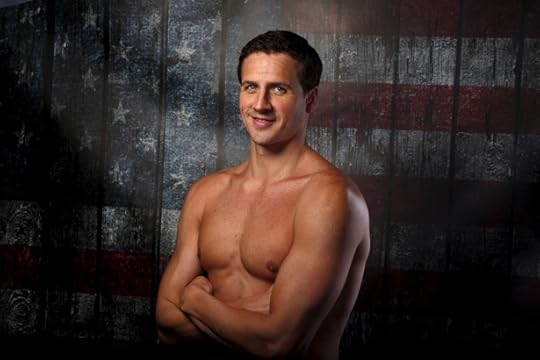
Lucy Nicholson / Reuters
Television
Can Ryan Lochte Redeem Himself on Dancing With the Stars?—Megan Garber explores whether the tainted swimmer might find forgiveness on the show where many celebrities have gone to fix their images.
Halt and Catch Fire Is TV’s Most Underrated Drama—David Sims discusses the brilliance of the AMC show as it enters its third season.
Reality (TV) Is Getting Kinder—Megan Garber investigates a tendency toward empathy in today’s competition shows.
RuPaul’s Drag Race Claims Its Queer Cultural Crown—Spencer Kornhaber revels in the giddiness of the Logo show’s new season premiere.
What Happens to Mr. Robot Without Mr. Robot?—Lenika Cruz weighs in on how the hit USA show fares without its titular personality.
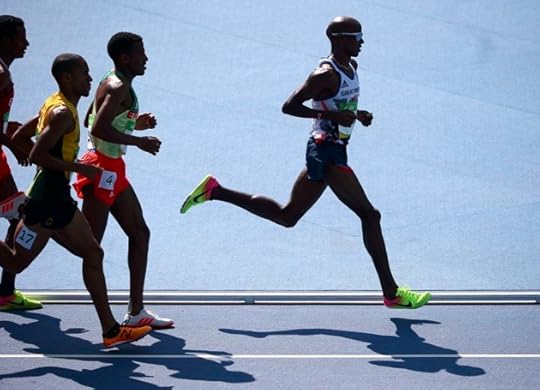
David Gray / Reuters
Sport
Immigrant Runners Winning More Than Olympic Medals—Ben Geman explains how competitors like Mo Farah offer a rejoinder to nationalistic sentiment in the U.S. and Britain.

Fox Searchlight
Media
Why the Debate Over Nate Parker Is So Complex—Morgan Jerkins traces the tricky historical politics behind the Birth of a Nation star’s recently resurfacing rape allegations.
Tim Kaine Embraces His ‘Dadhood’—Megan Garber explores how the vice presidential candidate is renegotiating ideas of family and masculinity.

Friday’s
Design
When T.G.I. Friday’s Loses Its Flair—Megan Garber examines the increasingly uniform aesthetic sweeping across America’s popular chain restaurants.

Hello Games
Games
The Joy of Naming Things in No Man’s Sky—David Sims looks at the delight of labeling discoveries in the new video game’s boundless universe.

The World's Biggest Marine Refuge: 442,000 Square Miles, 7,000 Species, 5 Sunken Aircraft Carriers

NEWS BRIEF With a stroke of a pen Friday, the Papahānaumokuākea Marine National Monument became as large as its name.
President Obama added more than 442,000 square miles to the Pacific Ocean wildlife refuge north of Hawaii on Friday, quadrupling its size and cementing its status as the largest marine protected area on Earth.
Living within the protected area are more than 7,000 marine species, including 24 species of whales and dolphins and five protected species of sea turtles, as well as foraging areas for the endangered Hawaiian monk seal and remote nesting atolls for numerous species of seabirds.
Papahānaumokuākea also holds cultural and historical significance for Pacific communities. The White House cited the vast seascape’s important spiritual role for native Hawaiians in Friday’s announcement:
The ocean will always be seen as an integral part of cultural identity for the Native Hawaiian community. The deep sea, the ocean surface, the sky, and all the living things in the area adjacent to the Monument are important to this culture and are deeply rooted in creation and settlement stories. Native Hawaiian culture considers the Monument and the adjacent area a sacred place. This place contains the boundary between Ao, the world of light and the living, and Pō, the world of the gods and spirits from which all life is born and to which ancestors return after death. Long-distance voyaging and wayfinding is one of the most unique and valuable traditional practices that the Native Hawaiian community has developed and continues to advance.
Once on the verge of cultural extinction, new double-hulled sailing canoes, beginning with the Hōkūle'a in the 1970s, are bringing voyaging and wayfinding to new generations. This traditional practice relies on celestial, biological, and natural signs, such as winds, waves, currents and the presence of birds and marine life. The open ocean ecosystem and its natural resources in the adjacent area play an important role within the cultural voyaging seascape within the Hawaiian Archipelago.
“This is one of the most important actions an American president has ever taken for the health of the oceans,” Senator Brian Schatz of Hawaii, who formally proposed the expansion last year, said in a statement. “Expanding Papahānaumokuākea will replenish stocks of ‘ahi, promote biodiversity, fight climate change, and give a greater voice to Native Hawaiians in managing this resource. President Obama’s declaration is only the beginning.”
Also located within the site is the wreckage of five aircraft carriers sunk at the Battle of Midway in 1942, perhaps the most pivotal battle of World War II’s Pacific theater. Four of the carriers—the Akagi, Kaga, Soryu, and Hiryu—were part of the Japanese fleet that attacked Pearl Harbor, while the fifth—the USS Yorktown—was part of the U.S. naval force that ambushed them six months later. Japan’s navy never recovered from the losses.
Obama expanded Papahānaumokuākea through authority granted to him by the Antiquities Act of 1906, a statute that allows presidents to create national monuments out of public lands. National monuments are distinct from national parks, which are created by acts of Congress.

Atlantic Monthly Contributors's Blog
- Atlantic Monthly Contributors's profile
- 1 follower



